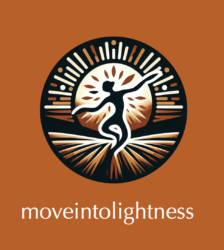Introduction
For many aspiring dancers, traditional dance classes are the go-to solution to improve their moves. Yet, there’s a common frustration: coordination issues that just don’t seem to get better, no matter how many hours are spent practicing steps and sequences. If this sounds familiar, it might be time to explore why traditional methods fall short and how a neuroscience-based approach can offer the solution you’ve been searching for.
The Limitations of Traditional Dance Training
Traditional dance training focuses largely on external movement patterns and repetition. Instructors correct your steps, posture, and rhythm. However, if you’re struggling with coordination, the issue may not be with the steps themselves but with how your brain communicates with your body. Without addressing this crucial aspect, you could end up feeling stuck, no matter how much you practice.
The Neuroscience of Dance
Coordination in dance is not just about physical ability; it’s about the neural pathways that control and coordinate these movements. The brain needs to send precise instructions to your muscles, and just as importantly, it needs to interpret feedback from your body. This is where the traditional approach often misses the mark – it doesn’t always engage the neural processes that underlie coordination.
The Neuroscience-Based Twist
Our program introduces a revolutionary twist: it integrates neuroscience into dance training. Here’s how it can make a difference:
1. Brain-Dance Connection: We start by strengthening the connection between your brain and your body, using techniques that promote neural plasticity—the brain’s ability to change and adapt.
2. Sensory Awareness: You’ll engage in exercises that enhance your sensory awareness, helping your brain to create more accurate motor maps of your body movements.
3. Regulation Exercises: We incorporate nervous system regulation exercises designed to improve your focus and concentration, crucial skills for picking up new dance routines and maintaining rhythm.
Real-Life Impact
The impact of this neuroscience-based approach is tangible. Students who have experienced this method report not just improvements in coordination but a new-found confidence in their dance abilities. They find themselves more in sync with the music and their movements become more fluid and natural.
Step into the Future of Dance Training
It’s time to step away from the outdated one-size-fits-all approach and embrace a tailored, brain-centric method. This is not just about learning to dance; it’s about rewiring your brain to dance better.
Conclusion: Your Next Move
If you’re ready to address the real issue behind coordination challenges and step into your full potential as a dancer, it’s time to try a neuroscience-based approach. Give us a call to learn more about our innovative program and start transforming your dance skills from the neural level up.
Take the Leap
Don’t let coordination issues hold you back any longer. Join our community of dancers who are already reaping the benefits of this cutting-edge approach. Sign up for our next session and move from frustration to fluidity on the dance floor.
